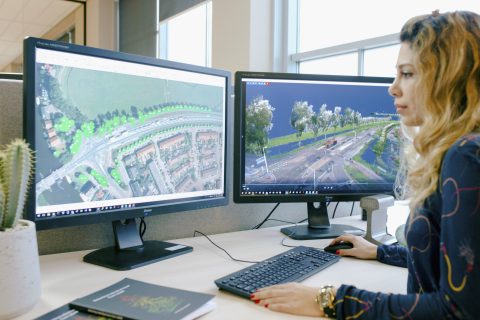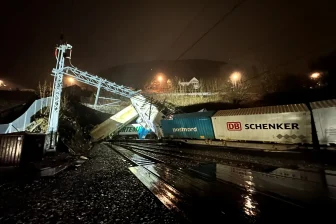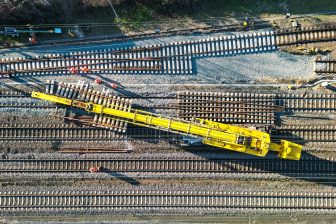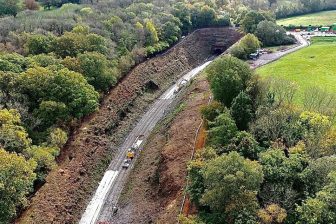
Algorithm leads to breakthrough in measuring trackside trees
Data scientist Anahita Khosravipour has developed an algorithm which measures the size, shape and height of trees next to a track, as well as how close they are to the track. The algorithm has a 97 per cent degree of accuracy. Khosravipour’s research is seen as a scientific breakthrough and she received two awards from the US. She will give a presentation about this topic during the international RailTech Europe conference.
Khosravipour works for Asset Insight and tested her technique in the French Alps from a helicopter flying 300 metres above the ground, using a laser scanner to detect trees. The laser light bounces back from the trees, and a sensor converts this reflected light into useable data.
Algorithm
Khosravipour developed an algorithm that eliminates noise. “A laser scanner can scan through the crown of the tree. The algorithm puts a sort of cover over the tree, meaning that only the tree’s structure remains. This application allows us to measure with 20 to 30 per cent more accuracy than the current method. Even if two trees are very close to each other, our measuring method can distinguish between them.”
“One of the commercial advantages of this method is that less storage space is required for the scanned data, as we delete unwanted data by applying the algorithm. Furthermore, the algorithm can be used in different laser systems from helicopters, drones, and moving trains or cars.”
Assignment from ProRail
Having been commissioned by VolkerRail, Asset Insight is currently scanning the trees around the rail network in Utrecht from a measuring train. “ProRail wanted to know which trees are close to the track and who the owners are.”As Asset Insight is mapping out all trees with a unique number and location, ProRail will get an insight into who owns which tree. For the trees that are on its own land, ProRail can set up a tree management programme. For the others, it can inform the owners if these trees are causing a hindrance for trains.
Cor van den Heuvel from Asset Insight: “Every tree owner is responsible for his trees and for potential damage caused to third parties, for example if a tree falls onto the track. Even in bad weather, the owner retains responsibility. You could say that these are circumstances beyond your control, but if the tree is not well maintained, that is actually not entirely true.”
Unique ID
“We can map all this data in a GIS environment (Geographic Information System, ed.), and every tree gets a unique ID. The data can be enhanced with information about the height and diameter from our VTA app, which adds the type of tree and various other pieces of VTA information as attributes. VolkerRail then gets insight into whether the height of a tree poses a problem for the overhead cables, for example.” VTA is short for Visual Tree Assessment.
What is special about Khosravipour’s research is that it is an academic study being applied commercially. Asset Insight has already carried out measurements for VolkerRail, provinces, various municipalities and water authorities.
On 28 March, data scientist Anahita Khosravipour will give a presentation about predictive maintenance during the international RailTech Europe conference. Please go to the website to view the programme.




